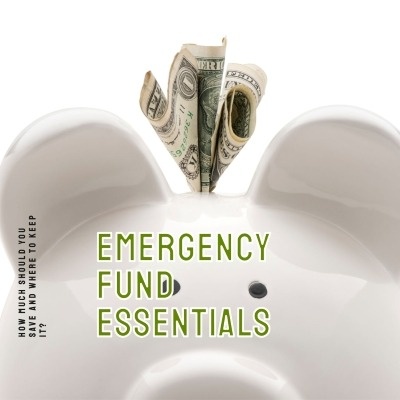Emergency Fund Essentials: How Much Should You Save and Where to Keep It?
Having an emergency fund is crucial for financial security. Life is full of unexpected expenses and financial hardships, such as medical emergencies, job loss, or home repairs. That’s why it’s important to be prepared with a safety net that can help you weather these storms without sinking into debt or financial stress. In this article, we’ll explore the best place to keep your emergency fund and provide guidance on determining how much you should have saved. By the end, you’ll have a clear understanding of the importance of an emergency fund and be equipped with the knowledge to make informed decisions about your financial future.
How Much Should You Save?
Determining the ideal size of your emergency fund doesn’t have to be complicated. It’s all about assessing your individual circumstances and planning for the unexpected. A good starting point is to consider your monthly living expenses. Take into account everything you consider essential expenses. Here’s a list to get you started
- Rent or mortgage payments
- Groceries
- Utilities
- Transportation costs
- Auto Insurance
Additionally, consider other factors such as the stability of your job and income variability, dependents or family obligations, and health insurance coverage. Aim to save three to six months of total living expenses. You can consider three months if you are single with a stable job and good health insurance. For married couples, if both of you have stable jobs with the same income level, you can also consider three months’ worth of expenses as your guide. However, if your job is not as stable, your income varies, or if your spouse has a much lower income, you may want to consider six months of expenses as your emergency fund.
Where to Keep Your Emergency Fund?
Now that we have identified how much you should have in your emergency fund, let’s focus on where you can save it. Ideally, you want the ability to access it quickly without time restrictions or stock market volatility. A savings or money market account at your bank would be an easy solution. However, there have been several online bank accounts that offer much higher interest. Compared to your local bank, they may offer a higher savings interest rate. However, you may be unable to access the funds for 2–3 business days. Because of that, I suggest keeping one month of your emergency fund in your primary bank and transferring the excess to an online savings account. Here are a few large online banks that are FDIC insured for consideration: Ally Bank, Marcus by Goldman Sachs, or CapitalOne360.
Please note that a Money Market Account at an FDIC-insured bank is not an investment. It offers a guaranteed interest rate, and you cannot lose money. The limitation is that you can only make six withdrawals a month. That should be plenty since this is your emergency fund, not the primary checking account. You also want to pay attention to this with online savings accounts since they often have withdrawal limitations as well.
Certificate of Deposit
Consider a Certificate of Deposit (CD) with savings beyond three months. It is a time deposit that may offer a higher interest since you cannot withdraw during that time. You will likely face an interest penalty if you break the CD and withdraw the funds early.
Summary
In conclusion, having an emergency fund is crucial to your financial plan and security. By following the guidelines outlined in this article, you can ensure you’re well-prepared for unexpected expenses and financial hardships that may arise. Whether you opt for a high-yield savings account, a money market account, or certificates of deposit (CDs), the key is to choose the best place that aligns with your financial goals, liquidity needs, and risk tolerance.
Additionally, keep in mind the recommended range of three to six months’ worth of living expenses as a baseline for your emergency fund. More importantly, once you have established your emergency fund, you can now invest excess savings toward your intermediate or long-term financial goals.
By taking action and building or reassessing your emergency fund, you’ll be better equipped to handle any financial curveballs that come your way. Remember, financial peace of mind starts with a well-funded emergency fund, so start saving today!
Reach Out to Us!
If you have additional federal benefit questions, contact our team of CERTIFIED FINANCIAL PLANNER™ (CFP®), Chartered Federal Employee Benefits Consultants (ChFEBC℠), and Accredited Investment Fiduciaries (AIF). At PlanWell, we focus on retirement planning for federal employees. Learn more about our process designed for the career federal employee.
Preparing for a federal retirement? Check out our scheduled federal retirement workshops. Sign up for our no-cost federal retirement webinars. Make sure to plan ahead and reserve your seat for our FERS webinar, held every three weeks. Want to have PlanWell host a federal retirement seminar for your agency? Reach out, and we’ll collaborate with HR to arrange an on-site FERS seminar.
Want to fast-track your federal retirement plan? Skip the FERS webinar and start a one-on-one conversation with a ChFEBC today. You can schedule a one-on-one meeting to discuss your specific planning needs.










